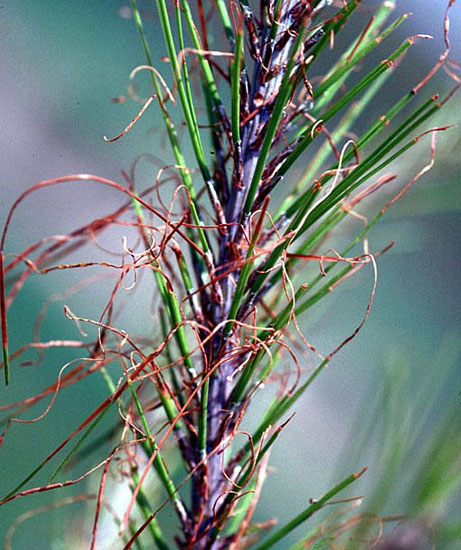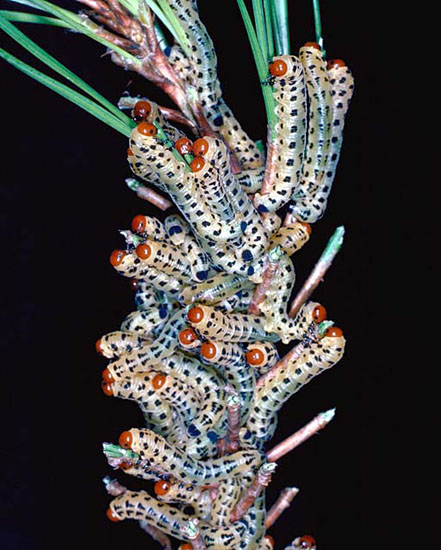Issue 15, August 27, 2010
Redheaded Pine Sawfly
Redheaded pine sawfly feeds primarily on two- and three-needle pines, being particularly common on Scotch, jack, and red pines. It also feeds on five-needle pines, Norway spruce, and larch growing near two- or three-needle pines. It tends to prefer weakened trees, those growing in poor sites, stressed by drought, or growing in competition with other plants.

Redheaded pine sawfly damage (G.K. Douce).
The larva is about an inch long when fully grown, has a red head, and is yellow with several rows of black dots. The larvae feed on the older needles first, and then feed on the younger needles at the tip of the branch. After the outside of the needle is eaten, the center of the needle is consumed. A characteristic of this insect's feeding is that tufts of partially eaten needles are usually left behind, looking like threads of straw. Because essentially all of the needles can be eaten, stripped branches or trees are likely to die.

Redheaded pine sawfly larvae (L. Lyche).
Two generations occur per year, with the larvae present from mid-May to late June and then again from mid-August to late September. Mature larvae drop from the tree and form cocoons on the ground or in debris (duff) under the tree. They spend the winter as prepupae, pupating in the spring. Reddish wasp-like adults with thickened waists and black wings emerge in the spring, although some wait for several weeks to emerge. They insert their eggs into pine needles with their saw-like ovipositor. Each female lays up to a dozen eggs per needle, laying 100 to 120 eggs per branch.
Because the larvae feed in a group, they can easily be removed by hand or pruning. Spraying the larvae with acephate (Orthene), azadirachtin (Azatin, Bioneem), carbaryl (Sevin), spinosad (Conserve), or a labeled pyrethroid insecticide will also provide control.--Phil Nixon
Author:
Phil Nixon